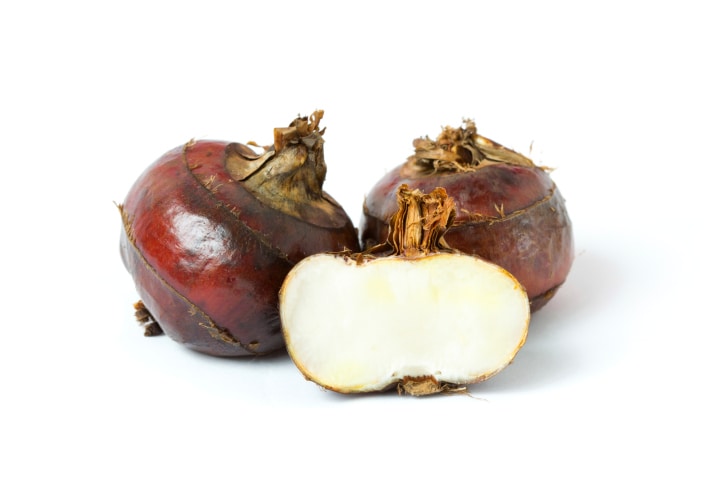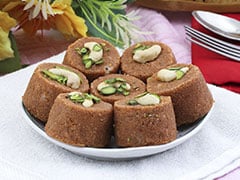Story ProgressBack to home
Water Chestnut(सिंघाड़ा)
Hindi Name:सिंघाड़ा
It is not a nut but a floating aquatic plant that grows in marshes. It is commonly used in Chinese cooking. It is a seasonal fruit that is available only after the monsoon until the start of winter. Devil's pod, buffalo nut, water caltrop are some of its other names.
- NDTV Food
- Nov 21 2014 13:20 IST
 It is not a nut but a floating aquatic plant that grows in marshes. It is commonly used in Chinese cooking. It is a seasonal fruit that is available only after the monsoon until the start of winter. Devil's pod, buffalo nut, water caltrop are some of its other names.
It is not a nut but a floating aquatic plant that grows in marshes. It is commonly used in Chinese cooking. It is a seasonal fruit that is available only after the monsoon until the start of winter. Devil's pod, buffalo nut, water caltrop are some of its other names.
It is a knobby edible tuber with a reddish black skin and a white crunchy flesh. The baroquely shaped fruits resemble the head of a bull. Rinse before use and remove the flesh while being consumed. They have a sweet taste with a slight crunch, somewhat nutty.
Because of their living characteristics, toxic content is formed in the seeds. The fruit is roasted to remove the toxins. While purchasing make sure you buys the ones that look firm and are wrinkle free. Unpeeled chestnuts can last up to a week. They should be stored in the refrigerator.
Usage
Roasted Singhara is consumed as a raw fruit, boiled or is grounded to powder and added as an ingredient in dishes. They are commonly used in Chinese and South East Asian cuisines.
It is dried and made into flour in India. Boiled singharas are sold as a popular street food snack in India.
Singhara fruit and its by-products like the juice and flour are used in cookery and medicine as well.
They are frequently eaten raw or added to stir fries, stuffing and dumplings for texture and it's sweet flavor. Steamed, the skin takes on a blackened color and it tastes almost like a potato.
Nutritional Value
They are a good source of fiber and have a very low fat and sodium content but high calorie count. They are cholesterol and gluten free. They also have cooling and detoxifying properties. Water chestnuts are known to aid in curing jaundice.
Juice extracted from the fruit helps ease problems caused by nausea and bad appetite. Singhara is considered the best home treatment for diabetes.It is a rich source of proteins, minerals and essential carbohydrates.
Caution: Excess consumption of singhara can bloat the stomach and cause stomach pain.








